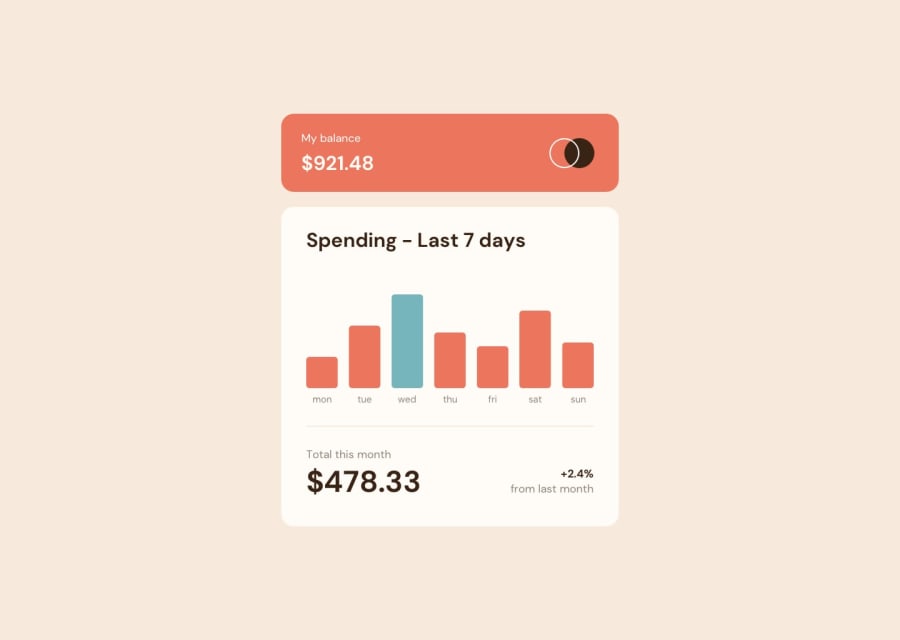
Design comparison
Solution retrospective
Enjoyed making this one. Felt there was a certain simplicity in the fact that the styling didn't change much with responsiveness.
Open to any and all feedback as there's sure to be improvements to be made.
Community feedback
- @petritnurediniPosted 10 months ago
Fantastic work on your app! 🌟 It's really cool to see such skillful coding with vanilla JavaScript. However, I'd like to offer some friendly suggestions for improvement:
Enhance SEO with Semantic HTML: Utilizing more semantic HTML elements can significantly improve your app's SEO. It's a simple yet effective way to make your content more accessible and search engine friendly.
Adherence to Design Specs: Aim for greater accuracy in matching the design provided on Frontend Mentor. This attention to detail can make a big difference in professional web development.
Headings Hierarchy: Start with an <h1> tag before using <h2> to maintain a proper hierarchical structure in your document. This not only helps with SEO but also makes your content more accessible to screen readers.
Clean Up index.html: Consider removing unnecessary or commented-out code in your index.html file. A clean codebase is easier to read, maintain, and debug.
Explore JavaScript Libraries: I encourage you to explore JavaScript libraries like React, Vue, or Angular. They can offer powerful tools and streamlined workflows for your future projects.
Overall, your app is impressive, and you're definitely on the right track. Keep up the great work and continue honing your skills! 👍
0 - @ZukizukPosted 10 months ago
Hello there, Congratulations on completing this project
Your solution looks nice
I have few suggestions that I think might be of interest to you.
- HTML: Consider using semantic HTML tags like
<main></main>,<section></section>and others that you can find in this link. And in this case, replace the<section class="container">with<main class="container">. the main tag should hold the main content of the page so consider correcting that.The semantic HTML tags help the search engines and other user devices to determine the importance and context of web pages. The pages made with semantic elements are much easier to read. It has greater accessibility. It offers a better user experience.
The heading elements are H1, H2, H3, H4, H5, and H6 with H1 being the highest (or most important) level and H6 the least. Only use one
<h1>per page - this should represent the main heading/subject for the whole page. Also, do not skip heading levels - start with<h1>, then use<h2>, and so on. The heading elements are H1, H2, H3, H4, H5, and H6 with H1 being the highest (or most important) level and H6 the least. In your code I didn't see any h1 or any heading tag which is wrong so consider fixing that. You need at least a h1 tag in your page.If there's no text in your page to serve as the h1 tag, provide one yourself which can best fit the page your developing and hide it with
position: absolute;I hope this feedback is helpful
Other than that great job
0
Please log in to post a comment
Log in with GitHubJoin our Discord community
Join thousands of Frontend Mentor community members taking the challenges, sharing resources, helping each other, and chatting about all things front-end!
Join our Discord
